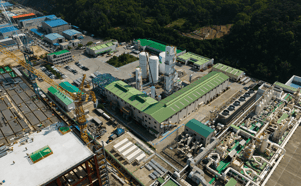Hydrocarbons – Not just fuel gases
Hydrocarbons, aptly named since they are a combination of just hydrogen and carbon atoms, are the simplest of organic compounds and are produced by processing natural gas or crude oil. As simple as their chemical structure may be, hydrocarbons are incredibly functional and used in a wide variety of processes and applications.
Natural gas is up to 90 percent pure methane and also contains varying quantities of ethane, butane, propane, carbon dioxide, nitrogen, helium and sulphur compounds. These associated higher hydrocarbons known as $quot;natural gas liquids$quot; (NGL’s) are removed from the natural gas stream and have a variety of other uses. These include providing the raw material for refineries and petrochemical plants where they are sent for further processing into other hydrocarbons and petrochemical intermediates, then through a series of complicated reactions to produce common plastics and polymers used by all of us.
At the refinery, the NGL’s are broken down into their constituents using a process known as fractionation. This works based on the different boiling points of individual hydrocarbons in the stream, and is essentially a process of boiling off each hydrocarbon one by one in a number of stages starting with the lightest first. Thus the deethaniser removes ethane, followed by the depropaniser, the debutanizer and finally the deisobutanisor which separates iso and normal butanes.
Within the industrial gases industry, hydrocarbons form an important part of the special gases and refrigeration areas of the business and have a bewildering variety of applications related to the chemical and physical properties of each product.
The method of naming them was defined in 1866 when the German chemist August Wilhelm von Hofmann proposed a system of nomenclature in which the suffixes -ane, -ene, -yne, -one, and -une are used to denote the hydrocarbons with 0, 2, 4, 6, and 8 fewer hydrogens than their parent alkane. The diagram shows how this system is still used today to name any hydrocarbon. However, old habits die hard and products such as ethylene and propylene are so called because in the mid-19th century, the suffix -ene (an Ancient Greek root added to the end of female names meaning $quot;daughter of$quot;) was widely used to refer to a molecule that contained one fewer hydrogen atom than the molecule being modified. Thus, ethylene (C2H4) was the $quot;daughter of ethyl$quot; (C2H5) and propylene (C3H6) the daughter of propyl (C3H7).
Ethane, ethylene (or ethene as we should call it), propane and butanes as well as other hydrocarbons are produced in vast quantities at refineries with world scale plants producing up to 1 million tonnes per year. These are used as raw materials for a huge variety of downstream products, as well as being supplied to the external fuel gas market for products such as propane and butane.
... to continue reading you must be subscribed









